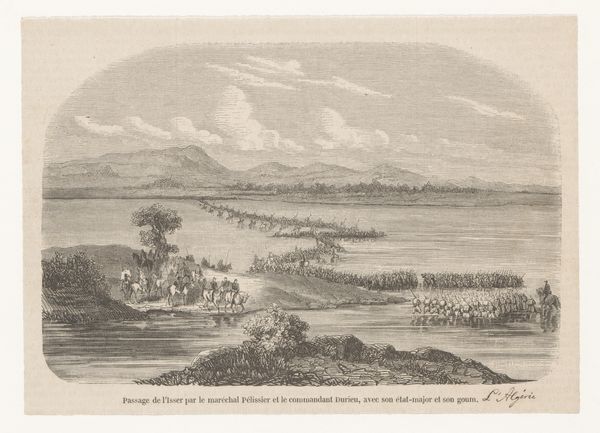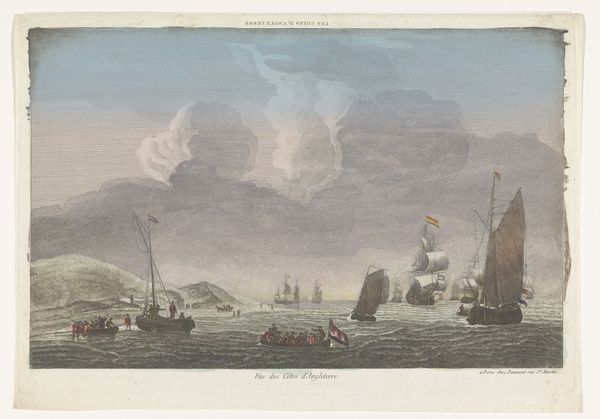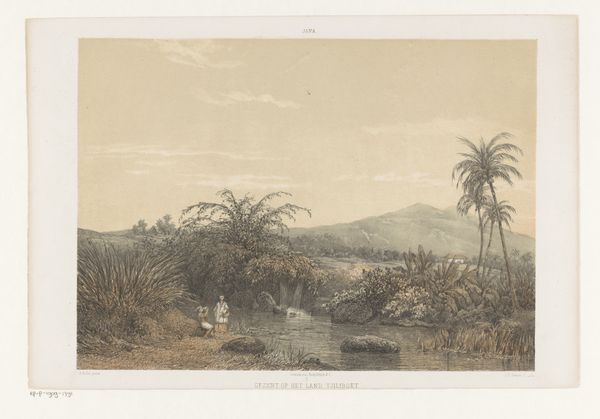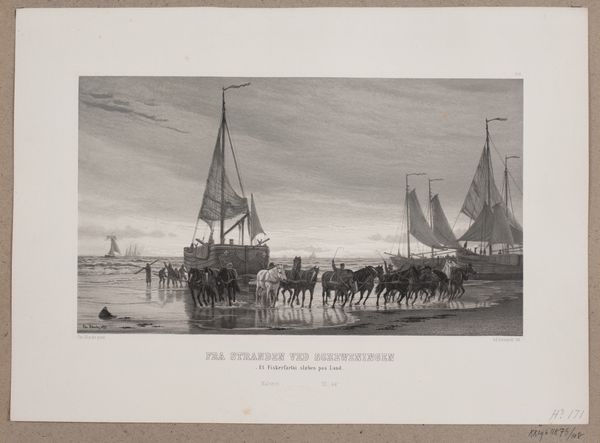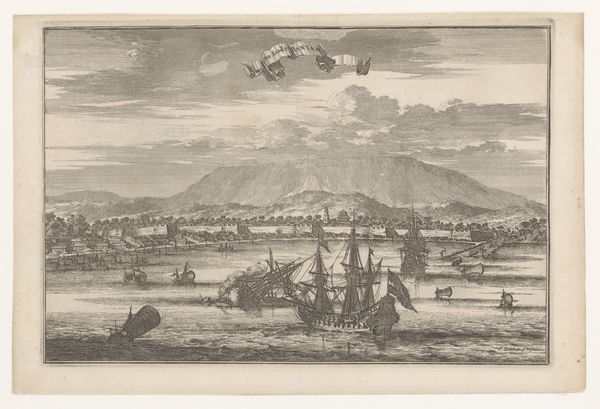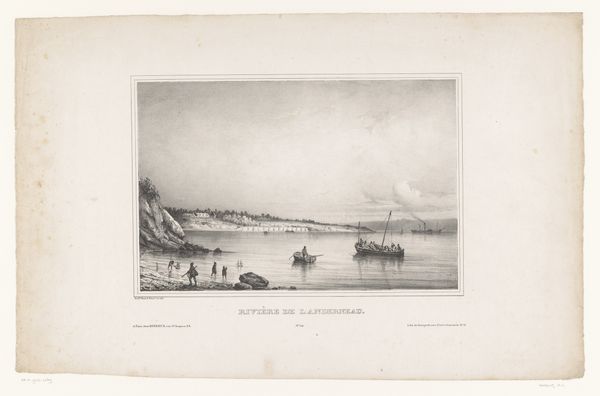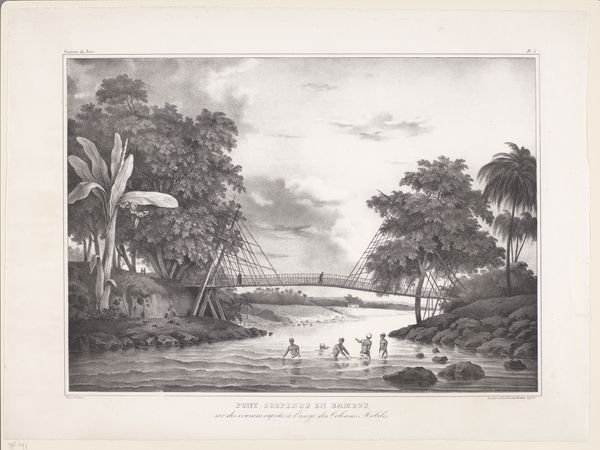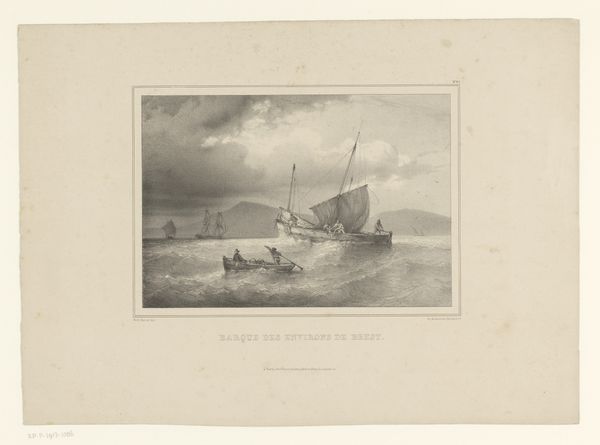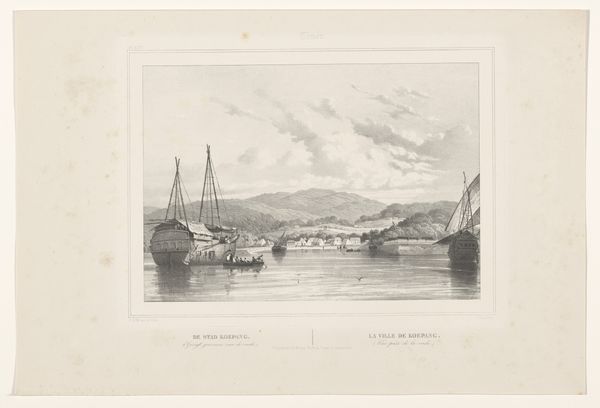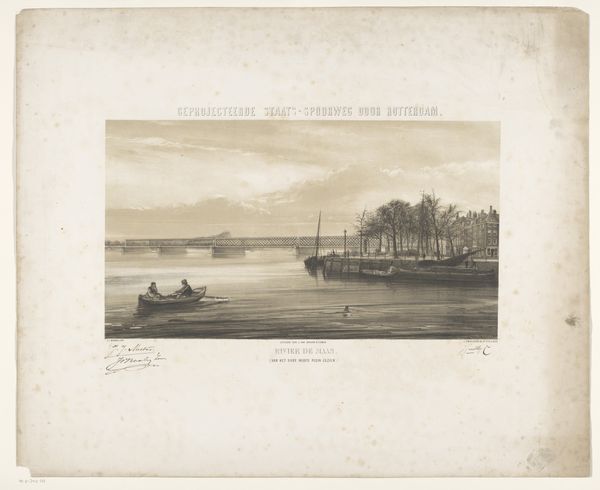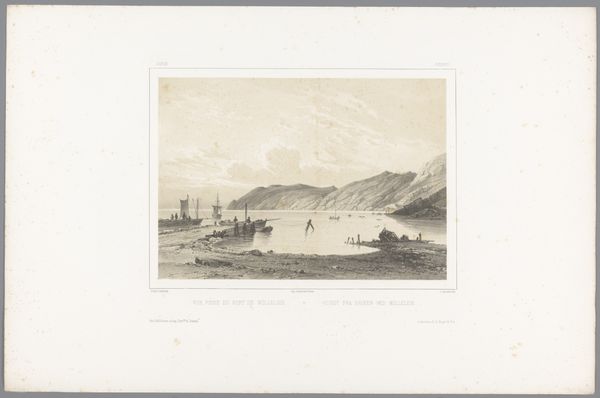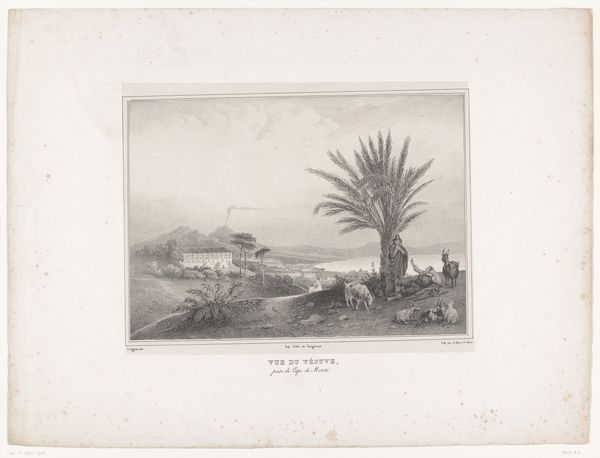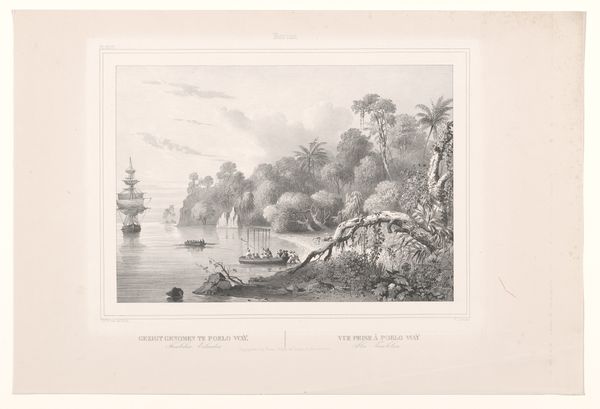
Vertrek van de koning van Nossi-Faly naar de begrafenis van zijn vader 1868 - 1877
lithograph, print
narrative-art
lithograph
landscape
orientalism
history-painting
Dimensions: height 211 mm, width 288 mm
Copyright: Rijks Museum: Open Domain
Curator: Let's consider this 19th-century lithograph, dating roughly from 1868 to 1877, titled "Vertrek van de koning van Nossi-Faly naar de begrafenis van zijn vader." It was created by Marcus Jacob Goedkind and is classified as narrative-art, embodying elements of orientalism and history painting. Editor: Right off the bat, I'm struck by how serene and picturesque this mourning scene appears! All those little boats on the water… it almost looks festive. The soft hues lend a quiet dignity. Curator: It's a depiction, then, of King of Nossi-Faly traveling for his father's funeral. The narrative-art and orientalist lens provide crucial context for the socio-political history—think about power dynamics and colonial interpretations of indigenous rituals and how it portrays this region and event to a European audience. Editor: True. You've got those rolling hills in the background, those sparse figures populating the beach—all these carefully placed elements contribute to the overall sense of controlled drama, if you will. I find myself wondering about the individual stories unfolding on each of those boats. And where were they headed? It triggers that sort of longing and I can almost smell the salty sea breeze. Curator: What stands out is not just the emotional impact or the individual narratives, but how the entire scene underscores cultural differences, maybe? Look at how grief and power are visually synthesized in this very specific time and place. And it makes you question what "really" happened, who’s story gets precedence and why? Editor: Totally. I keep going back to how visually "polite" it all feels! But with such clear direction as though staging this as art and event and not really something truly witnessed and "caught in the act." Still, you are spot on; despite this potentially sanitized presentation, it’s impossible to ignore the depth this lithograph has stirred inside us. Curator: Agreed. Looking at this print with contemporary eyes we can discuss, analyze, criticize the piece. But through all the contextual noise, these scenes and characters have stories that echo into modern times. Editor: Well said. It makes one think and inspires one to look at their own assumptions about culture, which is kind of all an artwork can really aim to do anyway, no?
Comments
No comments
Be the first to comment and join the conversation on the ultimate creative platform.

